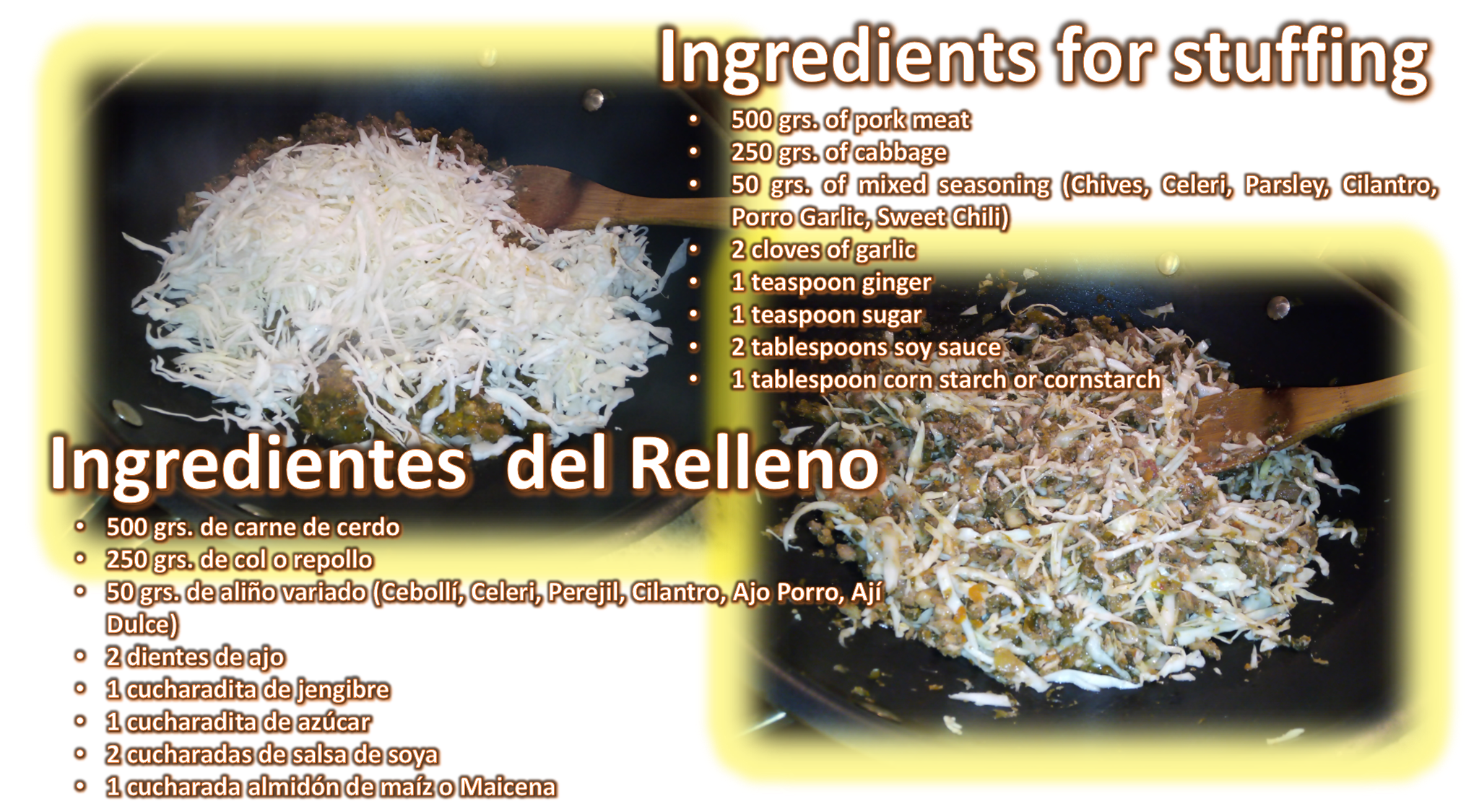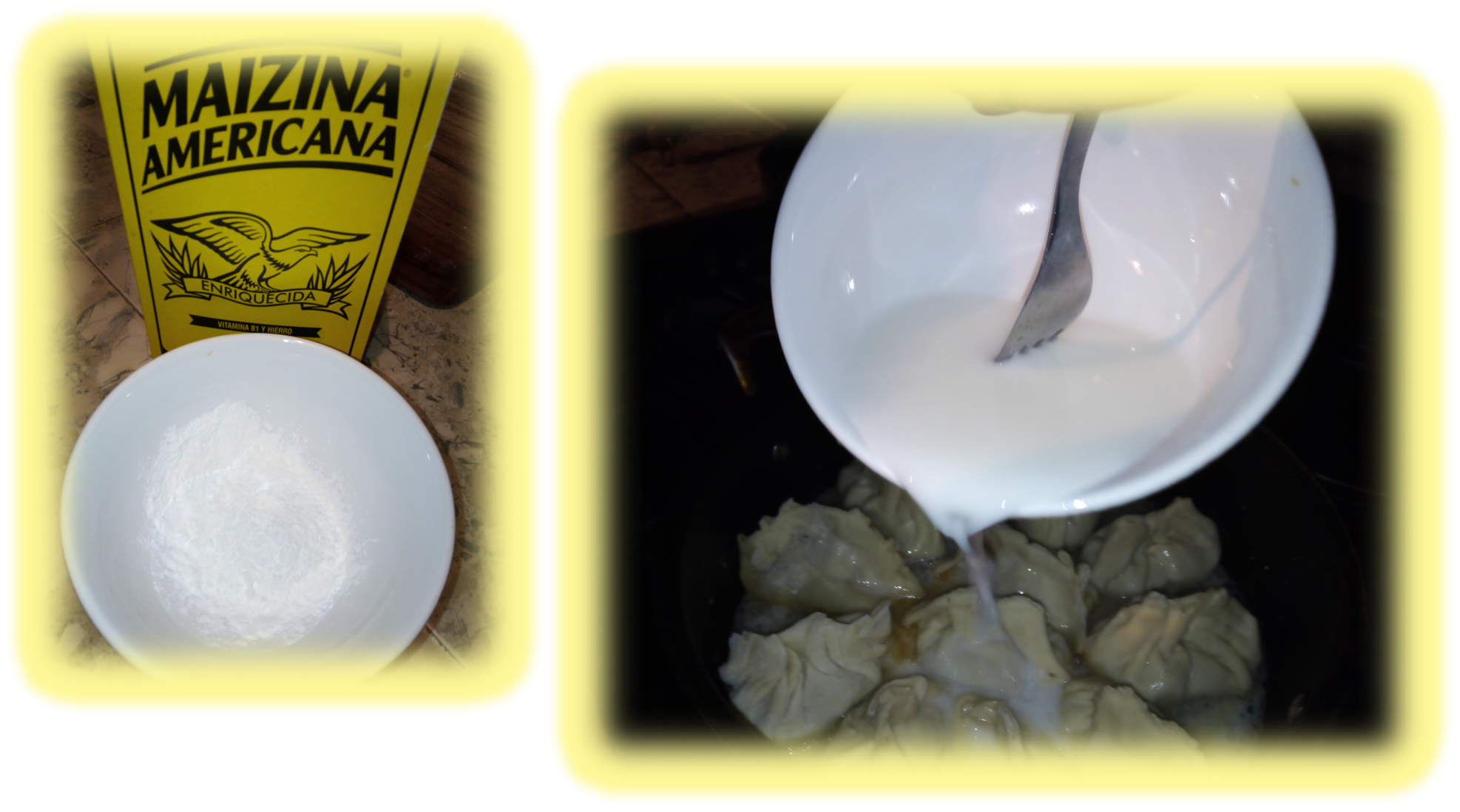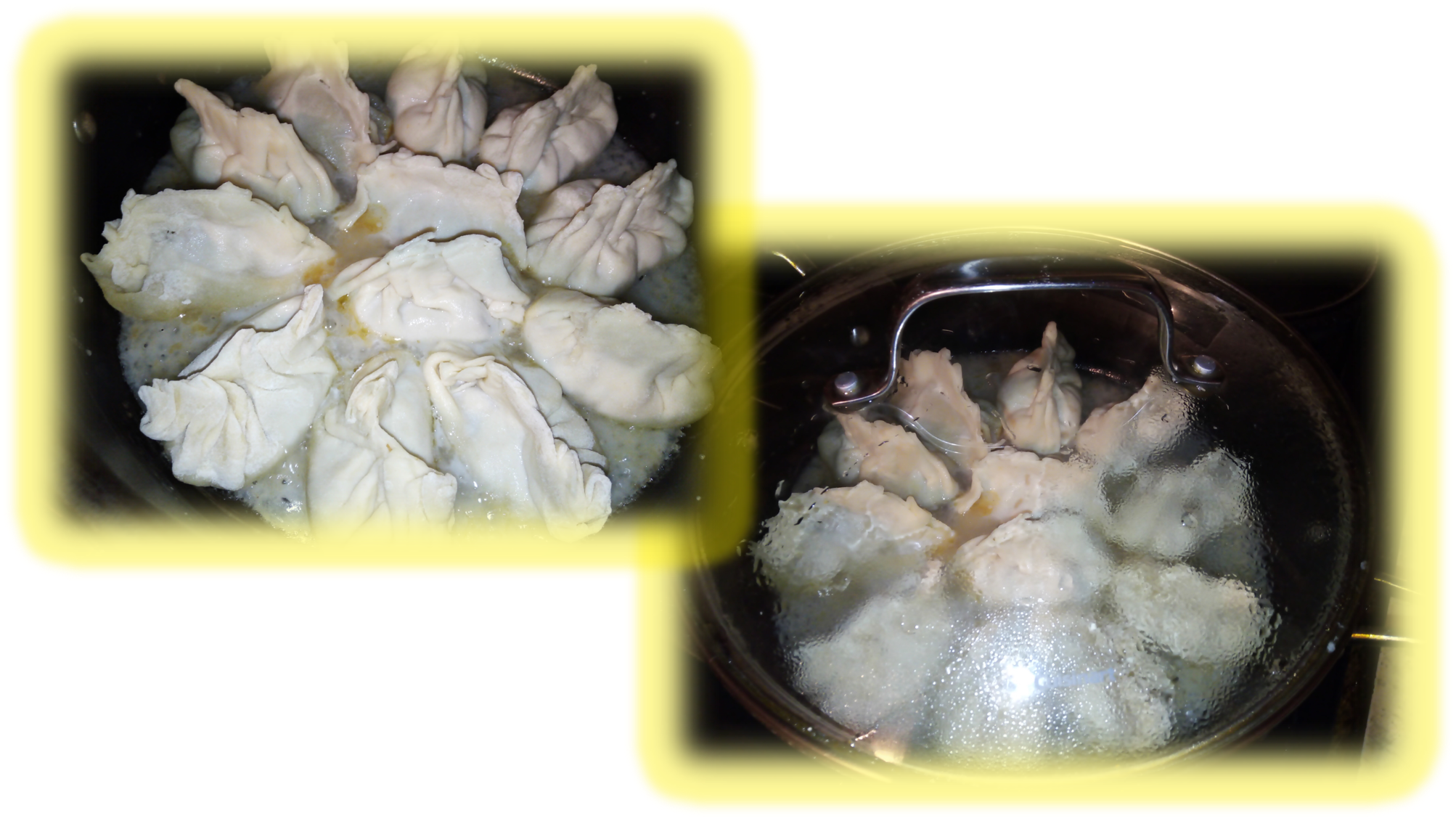Welcome Dear Food Lovers
Bienvenidos Queridos Amantes de la buena comida
Salud y bendiciones para todos mis queridos lectores amantes de la buena cocina, especialmente, todos aquellos que conforman esta excelente comunidad de #FoodiesBeeHive, siempre es un gusto compartir con ustedes. Hoy les traigo una preparación que le encanta a mi familia, sobre todo a mis niñas, porque todos participamos en la preparación. La realizamos para ocasiones especiales, porque, si bien, es sencillo el procedimiento, resulta un poco laborioso el armado, bueno al menos para nosotros, jajajaja.
Cheers and blessings to all my dear readers who love good food, especially all those who make up this excellent community of #FoodiesBeeHive, it is always a pleasure to share with you. Today I bring you a preparation that my family loves, especially my girls, because we all participate in the preparation. We make it for special occasions, because, although the procedure is simple, it is a bit laborious to assemble, well at least for us, hahahaha.


Porque, claro en su lugar de origen, Japón las hacen muy rápido, porque son todos unos expertos preparando las famosa Gyozas o Empanadillas Japonesas. Antes de seguir, les aclaro, que esta es nuestra interpretación de la receta, además, no somos expertos preparándolas, tratamos en lo posible que se nos parezcan, eso sí, nos quedan muy ricas y lo más importante es divertirnos preparándolas en familia. A continuación, les dejaré los ingredientes del relleno y luego de la masa.
Because, of course, in their place of origin, Japan, they make them very quickly, because they are all experts in preparing the famous Gyozas or Japanese dumplings. Before I go on, let me clarify that this is our interpretation of the recipe, besides, we are not experts preparing them, we try as much as possible to make them as similar as possible, but they are very tasty and the most important thing is to have fun preparing them with the family. Next, I will give you the ingredients for the filling and then for the dough.



Para los que no las conocen, la gyozas son una especie de empanaditas y en la forma tradicional de preparar, el relleno se agrega crudo, por lo que en las recetas que encontraran por allí, primero preparan la masa. Pero, en mi caso, como en casa no tenemos mucha experiencia preparándolas, nos preocupa que el relleno nos quede crudo. Por ello, siempre preparamos el relleno primero, ya que, lo cocinamos y por supuesto debemos esperar que este a temperatura ambiente, para poder manipularlo mejor. El relleno, no tiene mayor ciencia, simplemente preparamos un sofrito con todos los aliños y ajos, agregamos la carne de cerdo, picadita en trocitos muy pequeños. Para sazonar agregamos la cucharadita de jengibre, el azúcar y la salsa de soya, seguidamente agregamos la col o repollo, el cual previamente debemos cortar bien finito, revolvemos todo y dejamos que se cocine. Finalmente, agregamos la maicena, esto ayuda secar los líquidos de nuestro relleno y una vez, estamos conforme con el sabor del relleno, lo reservamos para que se enfríe, recuerden que debe quedar lo más seco posible.
For those of you who don't know them, gyozas are a kind of patty and in the traditional way of preparing them, the filling is added raw, so in the recipes you will find out there, the dough is prepared first. But, in my case, since we don't have much experience preparing them at home, we are worried about the filling being raw. Therefore, we always prepare the filling first, since we cook it and of course we must wait for it to be at room temperature, to be able to handle it better. The stuffing is not very scientific, we simply prepare a sofrito with all the seasonings and garlic, add the pork meat, chopped in very small pieces. To season, add the teaspoon of ginger, the sugar and the soy sauce, then add the cabbage or cabbage, which we must previously cut very finely, stir everything and let it cook. Finally, we add the cornstarch, this helps to dry the liquids of our stuffing and once we are satisfied with the flavor of the stuffing, we reserve it to cool, remember that it should be as dry as possible.



Ok. ahora si empezaremos con la masa, la cual es muy sencilla de realizar, los ingredientes pueden verlos en la imagen anterior. Lo primero que haremos, es tamizar las 3 tazas de harina de trigo, luego le agregamos las 3 cucharadas de Maicena y mezclamos, vaciamos en el tazón de la batidora y reservamos. Colocamos el agua a hervir, con la cucharadita de sal, una vez alcance el hervor, la retiramos del fuego y empezaremos a agregar de a poco a la mezcla de harina y maicena. Encendemos la batidora para que se empiece a integran la masa, no verteremos toda el agua, en un principio, usaremos solo 240 ml, y observamos su consistencia, les debe quedar una masa densa. Ahora, si la notan muy seca, le pueden agregar 10 o 20 ml más. Una vez la masa este bien integrada, la sacamos y colocamos en la mesada continuar amasándola a mano, hasta que nos quede bien lisa y uniforme, al llegar ese punto la envolvemos en papel film para cocina y lo llevamos a la nevera por 30 min.
Ok. Now we will start with the dough, which is very easy to make, the ingredients can be seen in the image above. The first thing to do is to sift the 3 cups of wheat flour, then add the 3 tablespoons of cornstarch and mix, pour into the bowl of the mixer and set aside. We put the water to boil, with the teaspoon of salt, once it reaches the boil, we remove it from the fire and we will begin to add little by little to the flour and cornstarch mixture. We turn on the mixer to start integrating the dough, we will not pour all the water, at first, we will use only 240 ml, and we observe its consistency, it should be a dense dough. Now, if you notice it is too dry, you can add 10 or 20 ml more. Once the dough is well integrated, we take it out and place it on the counter and continue kneading it by hand, until it is smooth and uniform, at that point we wrap it in plastic wrap and take it to the refrigerator for 30 minutes.



Pasados los 30 min, ya la masa esta lista para empezar a armar las gyozas, el relleno también se debe haber enfriado, así que, es hora de trabajar. Lo primero que hacemos es dividir la masa en pequeñas porciones, lo más parecidas posible, luego hacemos pequeñas bolitas.
After 30 minutes, the dough is ready to start assembling the gyozas, the filling should also have cooled, so it's time to work. The first thing we do is to divide the dough into small portions, as similar as possible, then we make small balls.



Seguidamente, tomamos cada bolita, la aplanamos un poco con los dedos y luego con el rodillo, la terminamos de aplanar hasta que nos quede un disco de aproximadamente un milímetro de espesor.
Next, we take each ball, flatten it a little with our fingers and then with the rolling pin, we finish flattening it until we have a disk of approximately one millimeter thick.



Ahora, como pueden ver en las imágenes, colocamos un poco de relleno en el centro del disco, seguidamente, untamos con los dedos un poco de agua en la mitad del borde del disco. Finalmente, doblamos el disco a la mitad y con los dedos presionamos un poco el borde para que queden bien unido.
Now, as you can see in the pictures, we place a little filling in the center of the disk, then we spread with our fingers a little water in the middle of the edge of the disk. Finally, we fold the disk in half and with our fingers we press a little bit the edge so that they are well joined.



En esta parte del proceso, solo queda levantar nuestra empanadita y como pueden ver en la imagen le haremos el ribete que caracteriza a estas deliciosas empanadillas japonesas. Parece complicado y al principio quizás lo es un poco, pero, les aseguro, que pronto se les hará muy fácil.
In this part of the process, the only thing left to do is to lift our dumpling and as you can see in the image, we will make the border that characterizes these delicious Japanese dumplings. It seems complicated and at the beginning it may be a little complicated, but I assure you, it will soon become very easy.



El mismo proceso, que ya les describí, lo irán repitiendo con cada una de las porciones de masa que separaron, y procederán a colocar las empanadillas una a una, en una bandeja enharinada reservándolas para su posterior cocción.
The same process, which I have already described, will be repeated with each of the portions of dough that were separated, and proceed to place the dumplings one by one on a floured tray, reserving them for later baking.



Llego el momento de cocinar nuestras gyozas, para ello en una sartén de fondo plano, colocaremos aceite y una vez este caliente, iremos metiendo las empanaditas, y esperaremos a que se doren como se ve en la imagen.
It's time to cook our gyozas, for this in a flat-bottomed pan, place oil and once it is hot, we will put the patties, and wait for them to brown as shown in the image.



Cuando ya las gyozas están doraditas, tomamos un poco de maicena le agregamos un poco de agua y la revolvemos con un batidor, hasta que se disuelva completamente la maicena en el agua y tenga una consistencia líquida. Como les muestro en la imagen con esa mezcla bañamos las gyozas.
When the gyozas are golden brown, take some cornstarch, add a little water and stir with a whisk until the cornstarch is completely dissolved in the water and has a liquid consistency. As I show you in the picture, with this mixture we coat the gyozas.



Después de bañar las gyozas con la mezcla de maicena y agua, tapamos la sartén, para que se terminen de cocinar al vapor.
After coating the gyozas with the cornstarch and water mixture, cover the pan so that they finish steaming.



Sabremos que, las gyozas están listas porque tomará una apariencia como brillante, además el líquido se secará completamente y se formará una especie de costra, como les muestro en las imágenes.
We will know that the gyozas are ready because it will take a shiny appearance, also the liquid will dry completely and will form a kind of crust, as I show you in the images.



Ya solo resta sacar con mucho cuidado las gyozas de la sartén y emplatar, nosotros nos las comemos sumergiéndolas o bañándolas en dos salsas. Una de las salsas es simplemente salsa de soya a la que le agregamos semillas de ajonjolí. En el caso de la otra salsa, mezclamos salsa de soya, miel y ajonjolí, esta es mi preferida, por el toque dulce, pero, como pueden leer, ambas son muy simples.
All that remains is to carefully remove the gyozas from the pan and plate them, we eat them by dipping or dipping them in two sauces. One of the sauces is simply soy sauce to which we add sesame seeds. In the case of the other sauce, we mix soy sauce, honey and sesame seeds, this is my favorite, because of the sweet touch, but, as you can read, both are very simple.



Bueno, ahora solo queda degustar las deliciosas gyozas, y como pudieron observar, a nivel general es una receta bastante sencilla, eso sí, muy laboriosa porque hay que hacer muchas empanadillas, jajaja. Quizás queden con un poco de dolor de espalda, pero les aseguro que valdrá mucho la pena el esfuerzo. Bueno, no me queda mas que despedirme de ustedes, les envío muchas bendiciones y deseo que gocen de una excelente salud. Dios los Bendiga.
Well, now all that's left is to taste the delicious gyozas, and as you can see, in general it's a pretty simple recipe, but it is very laborious because you have to make a lot of dumplings, hahaha. You may have a little back pain, but I assure you that it will be well worth the effort. Well, I just have to say goodbye to you, I send you many blessings and I hope you enjoy excellent health. God Bless you.

Contenido y fotografías de mi propiedad intelectual
Información Técnica
| Cámara | Pentax * istDL |
|---|---|
| Lente | * Pentax 18-55 |
| Iluminación | Luz Natural |
| Locación | Barcelona, Estado Anzoátegui, Venezuela |
Content and photographs of my intellectual property
Technical information
| Camera | Pentax * istDL |
|---|---|
| Lens | * Pentax 18-55 |
| Lighting | Natural Light |
| Location | Barcelona, Anzoátegui State, Venezuela |



The rewards earned on this comment will go directly to the people( @francyrios75 ) sharing the post on Twitter as long as they are registered with @poshtoken. Sign up at https://hiveposh.com.
Siempre agradecida de recibir su apoyo. Salud y bendiciones para todo el equipo de trabajo. 🇻🇪 🤗 😊 😍😘🌷🥀💐🌹♥️💝💖💗💓💞💕💟❣️❤️🧡💛💚💙💜
Con el apoyo de la familia.
Trail de TopFiveFamily
Muy agradecida por el apoyo familia @topfivefamily, salud y bendiciones para todos.
Felicitaciones Top3
Es algo laboriosa la receta, pero el resultado luce exquisito.
Me llaman la atención la masa y la forma de cocinarlas.
Gracias por compartir
Hola querida amiga, que gusto tenerte de visita, tienes razón aunque es una receta en esencia bastante sencilla es muy laboriosa, sobre todo si son muchos comensales. En nuestro caso la comemos solas, pero, en realidad los japoneses las acompañan con una variedad de platos.
Te envío un abrazo desde la distancia y muchas bendiciones para ti y los tuyos. 🤗😘🌷🌹💐🥀
Gracias por la explicación!